Visiting the Kibera slums in Kenya
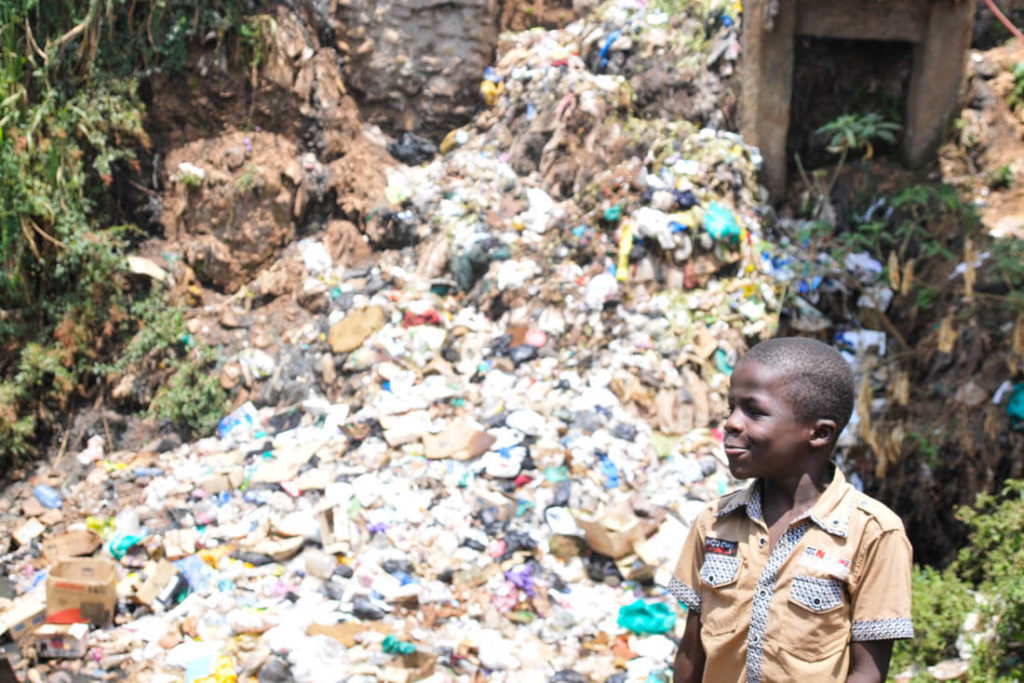
As soon as you start wandering around the slums of Kibera, and suddenly find yourself surrounded by dozens of children who can speak a perfect English, you realize that Kibera is different from the rest of the slums found in Africa, Asia and even Latin America.
Though this Nairobi district happens to be one of the poorest and dirtiest in Africa, a high and rigorous investment in education makes Kibera one of the slums with the highest level of hope.
What are the Kibera slums?
Remember to get travel insurance for Kibera
I strongly recommend IATI Insurance as it has COVID-19 coverage + 5% discount
Get your 5% discount if purchasing via this link
Kibera is an extremely poor suburb of Nairobi composed of over 1 million inhabitants spread across an area of only 2.5 square kilometers.
It’s classified as the second largest shanty-town in the world (after Johannesburg’s slums in South Africa), but this is often disputed.
Its origin dates back to 1900, when British colonists decided that Africans should live segregated from Europeans in the city outskirts.
The Brits also decided to separate Africans by ethnicity, and Kibera was the settlement where Nubian soldiers were assigned to.

During the following decades, Kibera evolved into a slum, and what started as a tiny settlement of only 600 inhabitants, became a suburb one million people. Today, Kibera is a suburb where poverty is a reality and can be seen at every corner. The unemployment rate is around 80%, only 20% of the population has access to electricity, and proper toilet facilities are practically non-existent. There are drug problems, especially with glue sniffing, issues with alcohol and HIV affects about 20% of the population. Endless piles of trash and garbage are all over the place.
The high investment in education provides this place with hope
I’m going to tell you the story of a man called Richard who I met when I was living and working in Dubai.
We were working in the same company and he was the director of an important department. Actually, he was Kenyan and was born and raised in the Kibera slums.
How could a man who was raised in the most extreme African poverty become the director of a European international company? The poor people in Kenya believe that there are two elements which are essential for having a better life: God and education.
Having a good education becomes one of the basics pillars for any Kenyan, and Kibera is no exception. Here, all kids speak perfect English and go to school until they become adults.
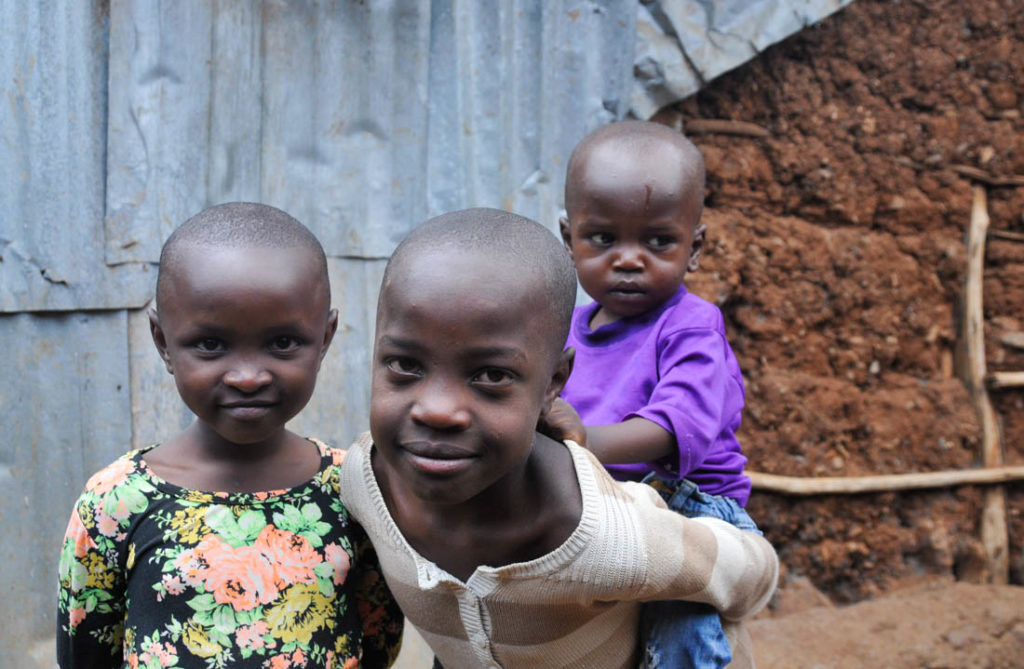
But education is not only limited to school and learning English, History and Mathematics.
Even at home, parents don’t allow their children to come back home from school until they finish their homework.
They value education over everything else and that’s why they are willing to pay anything from the few resources they have, in order to provide their children with a better education.
There are many Kenyans like Richard, and these people are a clear example of how the power of a good education can uplift someone even from the most extreme poverty.
Kibera is different and you realize this as soon as you start talking with its people.
How is life in the shanty-town of Kibera?
The suburb has an extension of 2.5 square kilometers.
There’s a main road which runs through the middle of it and is the center of social life.
On each site of the road, you’ll find the residential area, which consists of thousands of shacks built with no apparent order and compose a labyrinth of streets and lanes.
There’s a stream which passes through the main road perpendicularly and a train track that runs through the northern section.
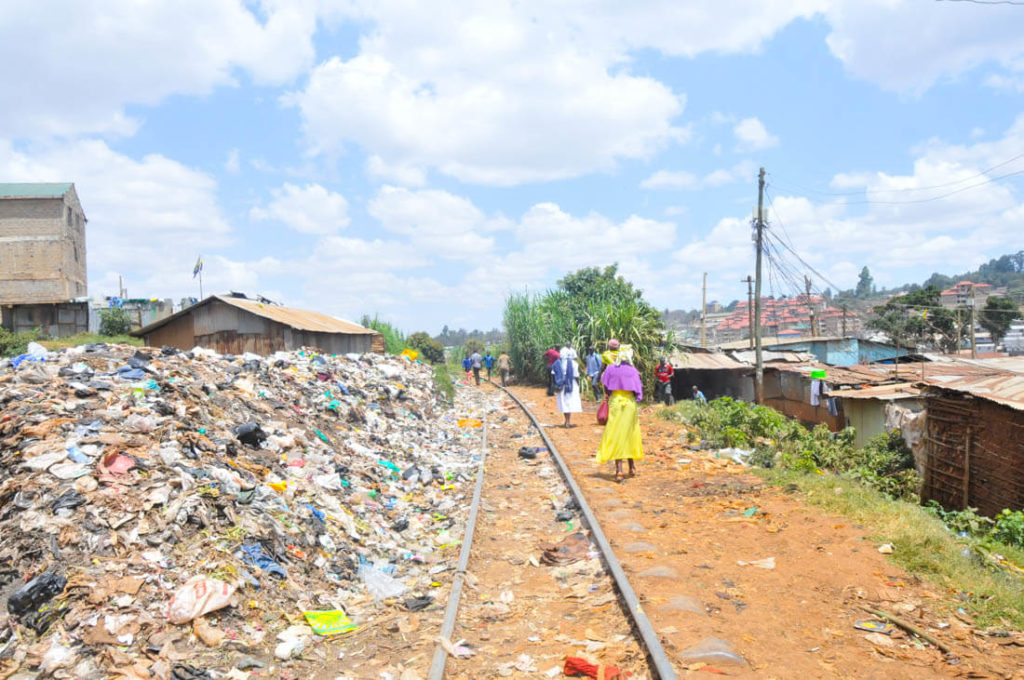
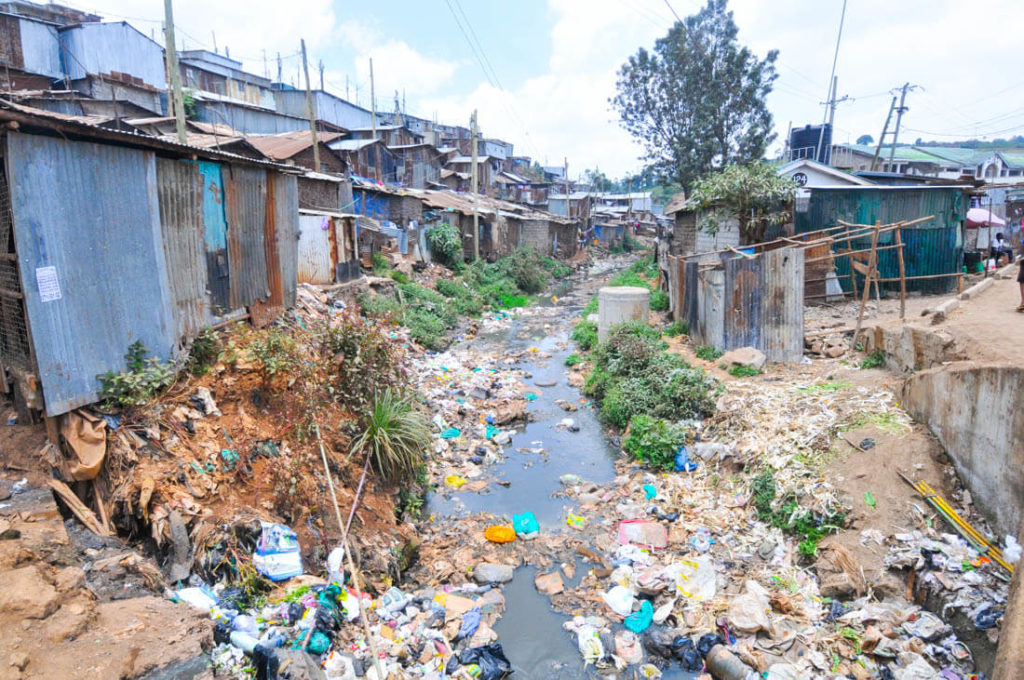
There are shit loads of garbage everywhere and the hygienic conditions are awful.
You can feel that most of the people are unemployed, since no matter which day of the week you go, you find thousands of people doing nothing.
The food stalls serve basically French fries fried in black oil.
One of the main business over there is selling coal, which confirms that people have no electricity.
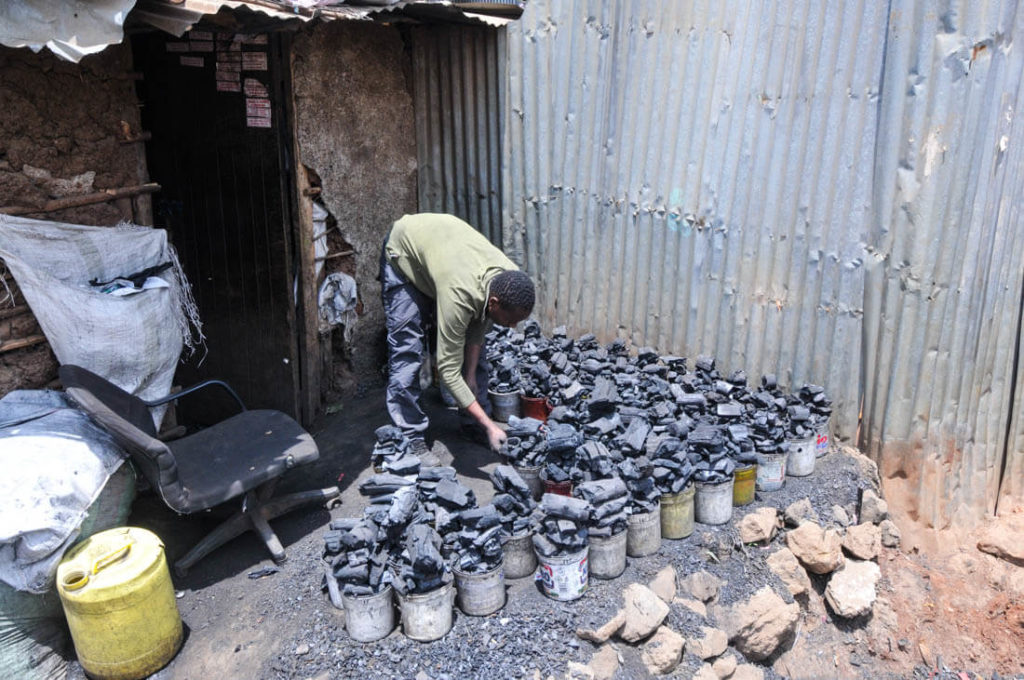
The life in this suburb couldn’t be worse but still, Kenyans greet you, smile at you and you can feel some sort of festive atmosphere.
African music can be heard from almost everywhere and you see people dancing to it.
The girls still wanna look pretty, and salons are packed with women who come to perfect their African braids.
This is the reason why I love Africa so much.
Is it safe to visit the slums of Kibera on your own?
For years, there have been reports of people getting kidnapped and violent crimes. However, this is something of the past, and today the neighborhood is completely safe.
Before going there, I just tried to make sure of it with my Kenyan friend, Denis, who I used to work with.
He told me that in the worse case, someone would steal your phone or your wallet, and the only advice he gave me was that I should never accept anyone’s invitation to his house.
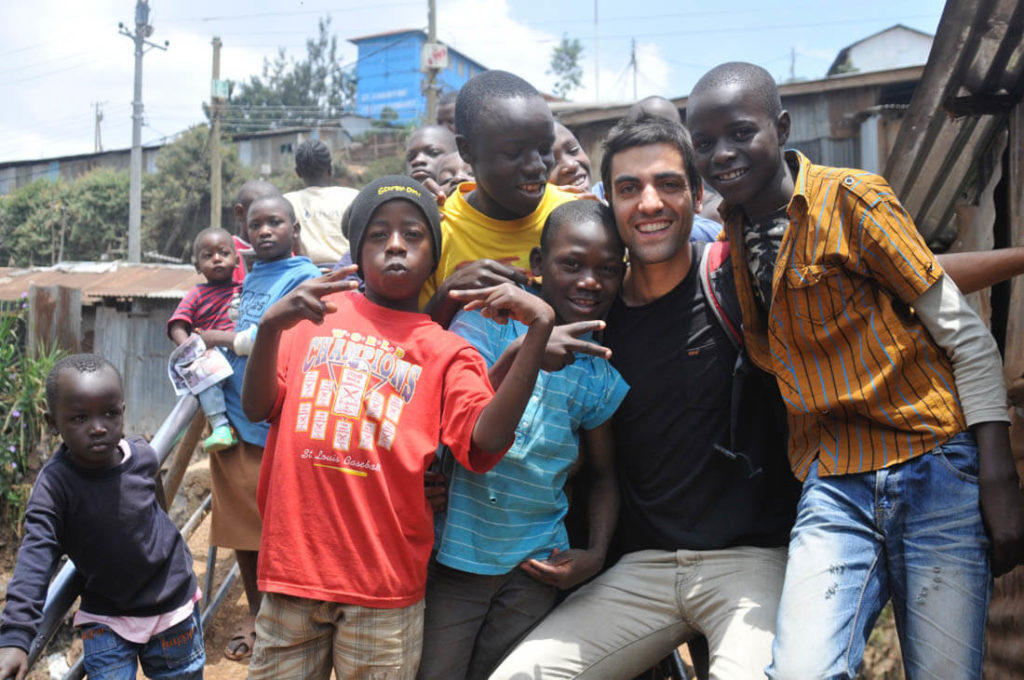
There were two types of locals. Those ones who kindly welcomed you and those hostile to you. All kids were pretty nice and real curious about the country where I came from.
Going on a safari? Check this out: How to a safari in Kenya on a budget
I had already walked through the whole main road, had seen the river and the train tracks. Now I was curious to explore the residential area. I left the road, crossed the bridge and walked into the labyrinth of streets. At the entrance, there was a woman:
– Woman: Where are you going?
– Yo: Just going for a walk
– Woman: Please, don’t get lost
– Yo: Why are you saying that?
– Woman: Just don’t get lost. It could be dangerous
– Yo: And what’s the danger exactly?
– Woman: Just don’t get lost
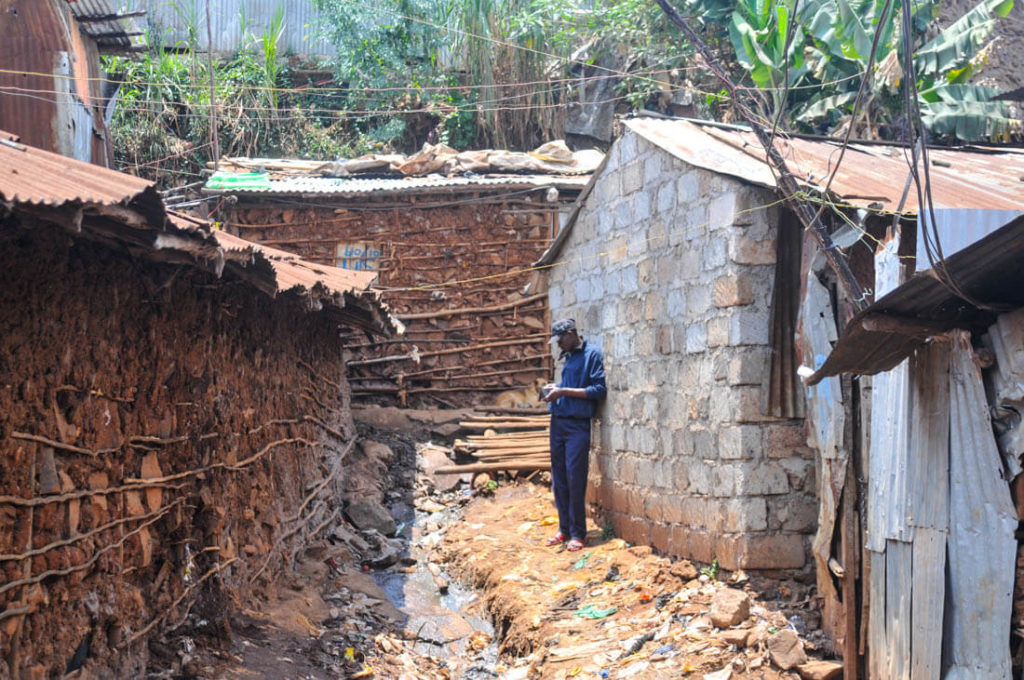
Why did she have to talk in that creepy and mysterious way? OK, I’ll try not to get lost.
I went in, started walking and I quickly realized how easy it was to become disorientated.
There were multiple routes leading into different places. It was a tremendous labyrinth.
I decided to walk very slowly and carefully. Suddenly, I met loads and dozens of children who were playing at different things.
– Children: Photo, photo!


I spent quite a long time taking pictures of them because they were asking for it all the time.
I kept on walking and they decided to follow my steps. It made me feel uncomfortable.
Are they just being friendly, or do they plan to fuck me up? The most grown-up ones of the group didn’t say anything and were too serious.
I stopped and after another photo session, an adult showed up and said:
– Adult: Hey, would you like to come over to our home?
– A kid: Yes, yes, come to our home!
– Me: No thanks, I am actually leaving
I’d gone too far, so I thought that the best would be to go back. The children were still following me:
– A kid: Hey, what do you have in your bag?
– Me: Nothing, dirty clothes and books
I had my phone inside my bag and of course my Nikon hanging from my neck.
The kid then tried to touch my bag. I moved aside and started to walk faster.
In less than 5 minutes I was at the entrance. What a coincidence, those kids didn’t want to be my friend anymore. Most of them stayed back.
Conclusion
For photography, sociological and altruistic reasons, the Kibera slums is an excellent place where to get lost.
You can communicate in English with practically any resident. Most of them are kind, but be careful with the ones who are not.
Always ask before taking a picture, and if you get into the residential area, try not to go too far.
There’s no violent crime.
If they had wanted to take my bag with violence, they would have done it straight from the beginning.
Just try not to bring valuable objects except for the essential ones.
I only brought my camera and my cell phone.
Read more: How to spend 24 hours in Nairobi
Read More Travel Stories
- A City Guide to Mosul
- Iron Ore Train Guide in Mauritania
- Travel Guide to Aleppo
- Hitchhiking and Backpacking in Saudi Arabia
- Is it Ethical to Visit Saudi Arabia as a Tourist
- Meeting the Qashqai People
- Palestinian Refugee Camp in Bethlehem
- Tales of Nubian People
- Visiting Syrian Refugee Camp
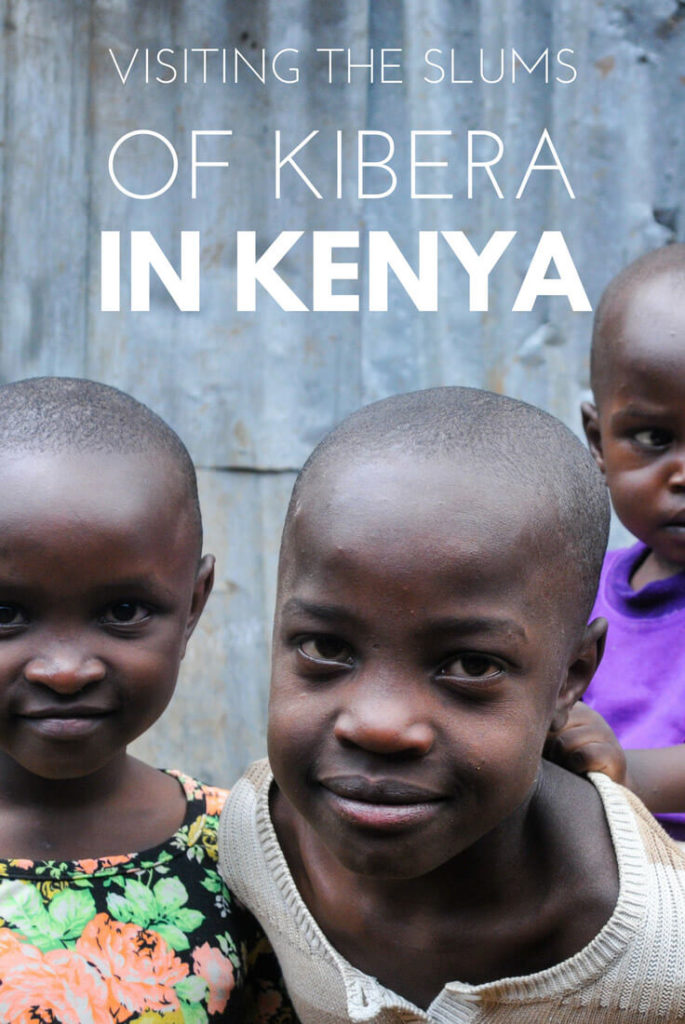
20 comments
Interesting article about your visit to the Kibera slum. I agree with you about being careful when visiting such places. And agree 100% about asking permission before taking a photo.
This was a super interesting read! I’m well and truly sat on the fence when it comes to visiting slums – I can’t decide whether it’s a good or bad thing to do, as a tourist. Although with that being said, I think the way you did it i.e. alone, without paying for “a tour” and capitalising on other people’s poverty, interacting with locals etc. is the best way to go about it!
As for the article itself, what a lovely little tale about Richard! I love that education is so important, and he’s testimony to that.
You are completely right. Is it a good thing visiting slums? As you said, some people go to this places on organized tours and behave like if they were in a circus and the inhabitants were the animals. But sometimes you need to go to these places because you want to learn and you want to see with your own eyes how do these people actually live. This helps you empathizing more with people, poverty and the third world. Plus, if you go there, you’ll buy water, coke and whatever snack. There can’t be anything wrong with that.
What a roller coaster experience you had. I just watched a Documentary on slums and it really made me appreciate the little things. To be able to live…well not only live but somehow thrive in a place like that while keeping a smile on your face, that’s just amazing. So glad you experienced one, even though it might have gotten a little scary but you held your own and powered through! Love your blog!
Hi Tatum, yes it’s amazing how the Kenyan people (and the African) keep happy with what they have. That place was full of music where people were dancing with no stop. I’m from Spain, and when the crisis started in 2008, people were crying because the government cut their salaries 20%. For years, everybody has been complaining for everything (including me), but then you see what is happening in the rest of the world, and you feel ashamed for complaining about such small things.
Such an incredible experience. I visited a slum in South Africa because our cleaning lady who lived there and became our friend invited us (a truly humbling experience!) and I briefly taught English at a slum school in India which was one of my most intense experiences… It’s heartbreaking to see how some people have to live and heart warming at the same time to see how warm and welcoming they often are (much more sometimes than your average well-off Westerner).
Hi Sanne, thanks for your message. Did you go to the slums in Johannesburg? Those ones are the largest ones in the world, just before Kibera. Teaching in a slum in India must have a been a great and rewarding experience. I’m sure you have more stories than me to tell! And yes, normally developing countries are the places where you find the warmest people. I just came from Sudan, which is the poorest country I’ve ever been but, at the same time, the best people I’ve ever met.
It’s heartouching to come across such places that can have an impact over your mind and heart. Never heard about Kibera – but really good to know about it. it was a super interesting post and I loved reading it.
This was a fascinating read. I’m so glad that there is hope in places like Kibera and Richard’s story is inspirational. Education is so important and hopefully soon Kibera can be brought above the poverty line. While I don’t think that I would visit a slum myself I agree that you visited in the best way, and not with a tour group.
Hi Emily, thanks for that! Glad you liked the story of my ex-colleague Richard! He’s one of the many examples. Yes, going there on a tour is not nice, as there are many tourist who think they are in a circus 🙁
First of all congratulations for have the guts to visit a Slum that too in an African nations. Just a thought of it can send shivers to many. And I must say the story and the pictures you shared is something we don’t see too often. Before reading your article I was inspired to visit Kenya for it’s wildlife but I have another reason to go there.
Hi Archana, thank you so much for your kind comment. Yes, there are many reasons to visit Kenya besides its incredible wildlife. The culture, the different tribes and cities can offer you an amazing point of view about this African nation. Most of the travelers just discover the Masaai Mara and a couple more of National Parks but they miss the most interesting part!
I just read this article and liked your pov. I’ve been to Kibera with my son as well as many other places in Kenya. Generally no fear and most folks are kind, welcoming and happy. I love Africa so much and cannot wait to go back!
Thank you, Jenn. Good to know that you’ve been to Kibera with your son as well. Actually, I had some issues but that’s only because I went too far away… The situation has improved so much in Kibera. I also love Africa and want to discover some other places! Good luck
What a great post! We have just arrived in Nairobi and booked a place about 1km away from the slums. Being a bit ignorant, I had no idea where the slums in Nairobi physically were! I found your article after researching about Kibera and your point of view is very nice to hear. Still not sure if I will visit them, but I am in Nairobi for two weeks so I’ll see what happens.
Thanks for the honest refreshing post!
Thank you! I’m glad that you liked the article. I think you should go! If you don’t leave the main street, you’ll just be fine and if you’re concerned just don’t bring any valuable object! Cheers
What an adventure you had! Such a good read about real life in the slums of Nairobi. I’m sure that trip was nerve-racking especially for people who haven’t been in the slums like that. But good to hear you’re safe, and there are still good people telling you to take care. I still believe there are more kind people and love in this world wherever you go than people with bad intentions. Thanks for this! Loved your blog!
Hi Joan, I’ve send you an email, but I think this is quicker:
My name is Amber, from the Netherlands. I came across your website because I am working on my final schoolproject and I was looking for interesting activities and places to visit in Kenya. For my schoolproject I am developing a sustainable (as can be) trip to Kenya for younger people (15-18 yrs old).
I saw your article about your adventure in the Kibera slum neighborhood, and I found it very interesting! I was wondering if you have any tips for me concerning sustainable activities and places to visit in Kenya?
For the development of this trip, it is very important that the trip is sustainably oriented and that there’s a lot of interaction with local communities. We would like to visit places, far away from the tourists. Where local communities are working on local projects and are happy to share their story with us and show us how they live.
Do you know Kenyans that are enthusiastic to help me out with finding places to visit (for instance: fair trade coffee plantation, local hospitals, local schools, other local projects), non-touristic activities to do (biking, helping the locals out with daily activities, local dance learning, local language learning, cooking with the locals and getting ingredients at the local market) and get me in contact with locals that are enthusiastic to host and to tell about their life, to guide, etc.?
With every activity and at every place that we visit, there needs to be a learning point included for the children. Such as: how local people go to school, how they work at plantations, entrepreneurship, etc. Interaction is important. We don’t want anything set up, we would like to truly hear and know about the local culture.
I would love to hear from you and if you have any tips for me!
Best regards,
Amber Oostindie from the Netherlands
Joan, I found this fascinating post due to a song I love called Smoke Machine. The artist is Dear Reader with the One Fine Day Music Kids. It led me to your blog because the song was created by the children who live in Kibera. “Smoke Machine” refers to the train that runs through the slum. It’s an utterly sweet, charming song – you can find on YouTube or Spotify.
Thank you so much for providing more background on Kibera – I’m
American and had never even heard of it before, nor have I been to Africa. But my sister and her family are moving to Kenya in July – she’s specialized in African poverty & government for most of her career – so I will be visiting Africa soon!
Hi Joan,
came across your blog as I was searching through for MARA expedition on a budget. There after stumbled upon this article on Kibera and I must say, just read it while smiling.
I once visited the place 9yrs ago, and a month later moved from a posh a gated community and settled in Kibera. Best decision ever. Not the actual shacks but the “upper ” side.
Has it’s challenges but the best place to live.
you welcome again to – 8town,